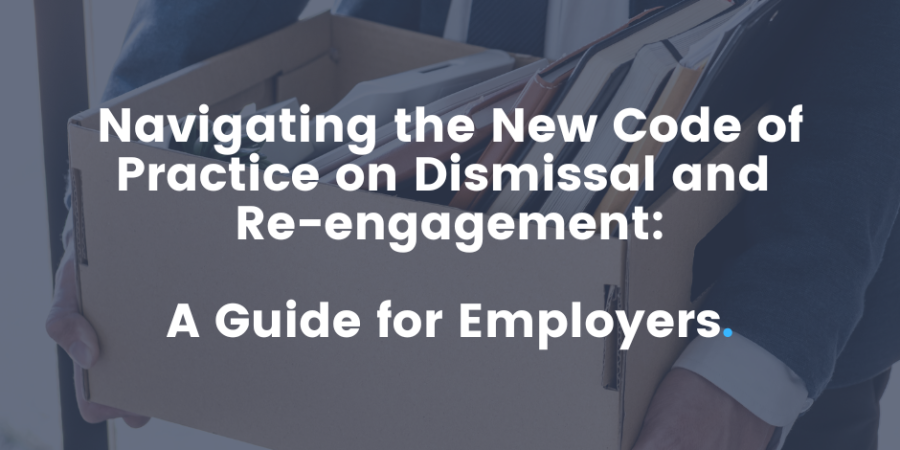Navigating the New Code of Practice on Dismissal and Re-engagement: A Guide for Employers
Dismissal and Re-engagement
In the challenging financial landscape, some businesses may be considering changes to employee contractual terms to achieve cost savings. From 18 July 2024, employers must adhere to the new statutory Code of Practice on Dismissal and Re-engagement. This guide outlines the essential steps your client needs to follow to ensure compliance and fairness during this process.
Exploring Alternatives
Dismissal and re-engagement, often referred to as ‘fire and re-hire’, should always be a last resort. Employers must first explore all other options to achieve the necessary cost savings before considering this route.
Meaningful Consultation
Engaging in thorough and meaningful consultation with all affected employees is crucial. This includes those on leave. If there is a recognised trade union, employee representatives should also be involved in the discussions. Employers should consult for as long as possible, avoiding the use of threats of dismissal to pressurise employees into accepting new terms.
Information Sharing
Transparency is key. Employers must share detailed information about the proposed changes, including:
- The specific changes being proposed.
- Who will be affected and the timeline.
- The business reasons for the changes.
- Alternatives that have been considered.
- The next steps in the process.
It is important to ensure employees and their representatives fully understand the proposals, allowing them to ask questions or make counterproposals. However, commercially sensitive or confidential information should be protected reasonably.
Consideration of Proposals
Employers must genuinely consider any reasonable alternative proposals from employees or their representatives with the goal of reaching an agreement. This involves assessing the objectives behind the proposals and the potential negative consequences of acting unilaterally. Additionally, employers should consider if there is any risk of discrimination and evaluate reasonable alternative methods to achieve their business objectives.
Support for Employees
Providing employees with adequate time to make necessary arrangements is essential. Employers should also consider offering additional support to ease the transition for affected employees, tailored to individual needs.
Final Steps if Agreement is Not Reached
If no agreement is reached despite best efforts, dismissal and re-engagement may become necessary. Employers must clearly outline the new terms in writing and ensure employees are re-engaged promptly to maintain their continuity of service. Only the changes that have been consulted on should be implemented.
Post-Implementation Review
Continual review of the changes is necessary to ensure they remain relevant and necessary. Seeking employee feedback can be valuable in gauging the impact and necessity of the changes.
Legal Considerations
While failing to follow the Code does not automatically result in liability, it can be used as evidence in employment tribunal proceedings if an unfair dismissal claim is brought against the employer. Therefore, adhering to the Code is not only a legal safeguard but also a practice of good faith and fairness.
By following these steps, your client can ensure compliance with the new Code of Practice on Dismissal and Re-engagement, handling the process in a fair and legally sound manner. This approach helps maintain trust and transparency within the workforce, even in challenging times.
For further guidance on navigating these changes, feel free to contact our team of experts. We are here to support you through this transition, ensuring your business remains compliant and your employees are treated with the fairness and respect they deserve.
PLEASE NOTE: The new government are proposing to change this legislation again, so expect further updates…







